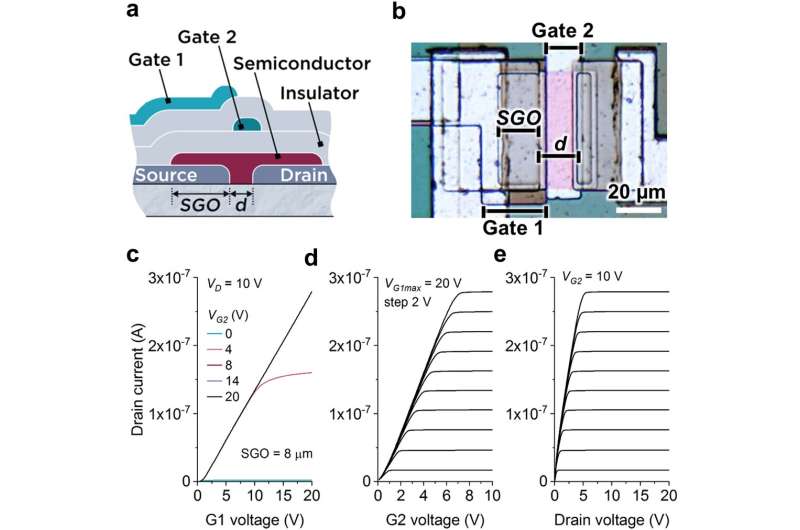Researchers demonstrate multimodal transistor in artificial neural networks

Researchers at the University of Surrey report a proof-of-concept demonstration of a multimodal transistor (MMT) in artificial neural networks, which mimic the human brain.
This is an important step towards using thin-film transistors as artificial intelligence hardware and moves edge computing forward, with the prospect of reducing power needs and improving efficiency, rather than relying solely on computer chips.
The MMT, first reported by Surrey researchers in 2020, overcomes long-standing challenges associated with transistors and can perform the same operations as more complex circuits. This latest research, published in the peer-reviewed journal Scientific Reports, uses mathematical modeling to prove the concept of using MMTs in artificial intelligence systems, which is a vital step towards manufacturing.
Using measured and simulated transistor data, the researchers show that well-designed multimodal transistors could operate robustly as rectified linear unit-type (ReLU) activations in artificial neural networks, achieving practically identical classification accuracy as pure ReLU implementations. They used both measured and simulated MMT data to train an artificial neural network to identify handwritten numbers and compared the results with the built-in ReLU of the software. The results confirmed the potential of MMT devices for thin-film decision and classification circuits. The same approach could be used in more complex AI systems.
Unusually, the research was led by Surrey undergraduate Isin Pesch, who worked on the project during the final year research module of her BEng (Hons) in Electronic Engineering with Nanotechnology. COVID meant she had to study remotely from her home in Turkey, but she still managed to spearhead the development, complemented by an international research team, which also included collaborators in the University of Rennes, France and UCL, London.
Isin Pesch, lead author of the paper, which was written before she graduated in July 2021, said, "There is a great need for technological improvements to support the growth of low cost, large area electronics which were shown to be used in artificial intelligence applications. Thin-film transistors have a role to play in enabling high processing power with low resource use. We can now see that MMTs, a unique type of thin-film transistor, invented at the University of Surrey, have the reliability and uniformity needed to fulfill this role."
Dr. Radu Sporea, Senior Lecturer at the University of Surrey's Advanced Technology Institute, said, "These findings are a reminder of how Surrey is a leader in AI research. Many of my colleagues focus on people-centered AI and how best to maximize the benefits for humans, including how to apply these new concepts ethically. Our research at the Advanced Technology Institute takes forward the physical implementation, as a stepping stone towards powerful yet affordable next-generation hardware. It's fantastic that collaboration is resulting in such successes with researchers involved at all levels, from undergraduates like Isin when she led this research, to seasoned experts."
More information: Isin Surekcigil Pesch et al, Multimodal transistors as ReLU activation functions in physical neural network classifiers, Scientific Reports (2022). DOI: 10.1038/s41598-021-04614-9




















